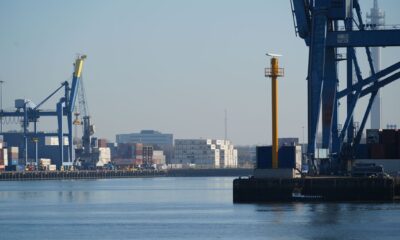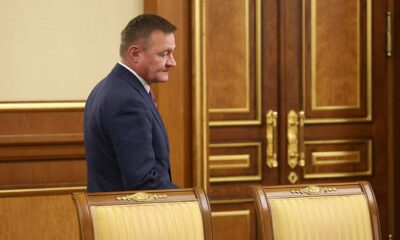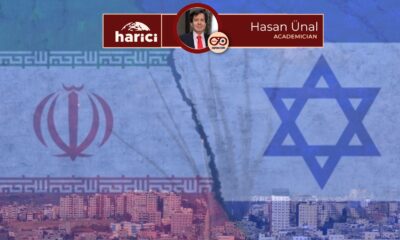Europe
Europe heading for a ‘military Schengen’
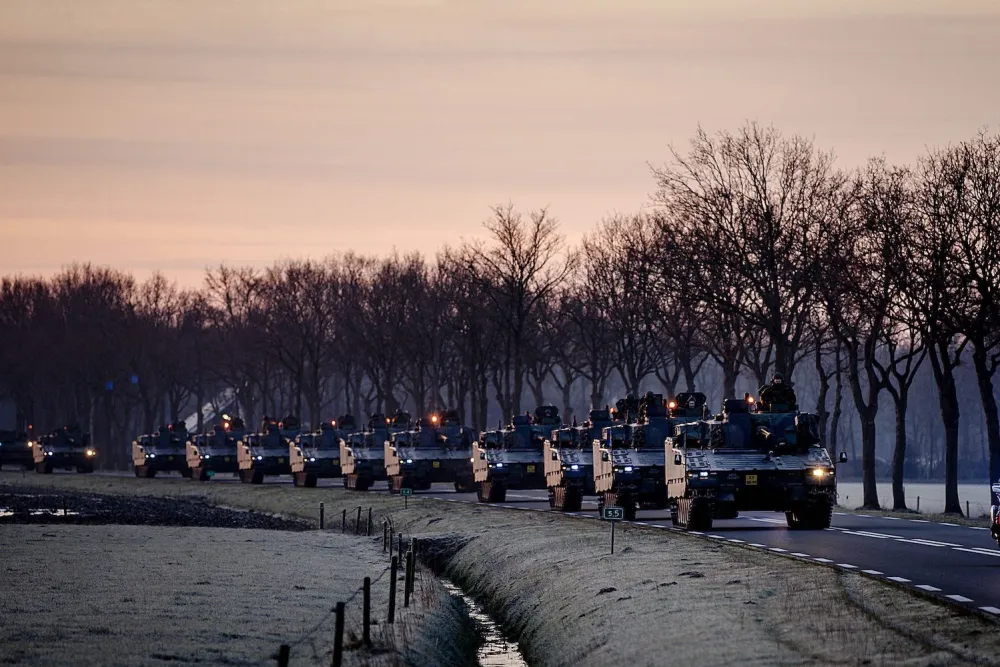
The long-proposed plan for a ‘military Schengen’ zone in Europe is already being implemented, according to an assessment in Foreign Policy (FP).
At the end of January, Germany, the Netherlands and Poland signed an agreement to create a military transport corridor between them. Siemtje Möller, Parliamentary State Secretary at the German Ministry of Defence, said the corridor would increase military mobility ‘on the way to a real military Schengen’.
It is not the first time that European politicians have floated the idea of adapting the existing visa-free movement of people and goods in the Schengen area to the movement of troops and military equipment throughout Europe, but the idea is now clearly gaining momentum.
The idea of a military Schengen first emerged after Russia’s annexation of Crimea. European military authorities are exploring the lessons of the Cold War, including military mobility.
But several experts, diplomats and military sources told FP that progress has been much slower than desired. “The liberalisation of the rules is agreed by everyone. But the problem is that we have been talking about it since 2015,” Tomasz Szatkowski, Poland’s permanent representative to NATO said.
Officials acknowledged that European countries have ‘a long way to go’ to effectively move their personnel and materiel.
The transition of anything related to a military mission in Europe is beset by obstacles ranging from bureaucratic hurdles to infrastructure gaps.
Baltic states fear no help in case of war
Urmas Paet, an Estonian MEP and vice-chairman of the Foreign Affairs Committee, rated military mobilisation ‘3 out of 10’ and suggested that it could currently take ‘weeks or at least more than a week’ to send supplies to the Baltic states.
The FP stresses that the ‘paperwork’ is cumbersome. Different permits have to be obtained from different ministries in different countries, and sometimes from different regions within a country, it said, adding that most roads and bridges are built for civilian use and are unlikely to withstand the weight of heavy military equipment.
As the central European fuel pipeline does not extend to the eastern countries, longer delays in fuel supplies could also be a decisive factor. In addition, track gauges in the former Soviet states are different from European gauges, and transferring thousands of troops and equipment from one train to another in a wartime situation could add to the time required.
Mini-military Schengen for the Balkans planned
“Now I hear ministers in various organisations talking about it,” Lieutenant General Ben Hodges, a former NATO commander who was the first to advocate military Schengen and is believed to have coined the term, told FP at the recent Munich Security Conference.
The ability to act quickly in a crisis is a crucial part of military deterrence doctrine, Hodges stressed. “We need to have not just equipment and troops, but the ability to move quickly, to get spare parts in, to store fuel and ammunition, and the Russians need to see that we have that,” the officer said, noting that a force’s ability to mobilise and move quickly must be visible to the enemy and deter them from attacking in the first place.
While welcoming the agreement between Germany, the Netherlands and Poland as a ‘great start’, Hodges points out that many more such corridors are under discussion.
Bulgaria’s chief of staff, Emil Eftimov, for example, said the allies should prioritise a corridor from Alexandroupoli in Greece to Romania and across the Adriatic to Albania and northern Macedonia.
“They want corridors from Greece to Bulgaria to Romania. The aim of all these corridors is to have a smooth route in terms of infrastructure, but also to get customs and all the legal obstacles out of the way,” Hodges said.
Germany-Netherlands-Poland corridor as a model
The Germany-Netherlands-Poland corridor is the first of many planned to identify and resolve bottlenecks and possibly provide a template for future corridors.
A senior military source, who spoke to FP on condition of anonymity, said the corridor would address a number of issues.In peacetime, he said, it would also allow authorities to smooth federal processes, as each state in Germany has its own laws for troops or dangerous equipment passing through its territory. In wartime, he added, the corridor would be ‘much more than a road’.Explaining that a hundred thousand or more soldiers would be on the move in a crisis, the military source said: “They would need a place to stop, rest, access spare parts depots and fuel depots.In such a scenario, we would also need arrangements to deal with war refugees,” the military source said.
This is a daunting task even for the three nations. Paet added that defence is a ‘national capability’ and ‘countries share as much as they want to share’. Countries do not easily share details of critical infrastructure, such as the location and number of bridges that have a military load classification and can support the weight of heavy tanks.
The EU’s roads and railways – not fit for war
There is also a lack of accurate data on infrastructure. According to a 2021 report by the Centre for European Policy Analysis (CEPA), 90 per cent of European roads, 75 per cent of national roads and 40 per cent of bridges can carry vehicles classified as military, with a maximum load of 50 tonnes.
The Leopard and Abrams tanks, both of which have been used against Russia on the Ukrainian battlefield, are significantly heavier.
“The Leopard tank weighs about 75 tonnes, I think, and the Abrams is a bit heavier. Most of these tanks will be transported behind HETs (heavy equipment transporters) and each HET weighs about 15 to 20 tonnes. There won’t be just one tank on the road,” he said.
CEPA also notes that the combination of trucks, trailers and heavy tanks could be well in excess of 120 tonnes and considers the existing infrastructure to be largely unsuitable for military movements.
The EU recognises the need to fund dual-use infrastructure – civil and military – and has already approved funding for 95 such projects.
But the Polish ambassador and Hodges said they were concerned that funding for the EU’s infrastructure financing instrument, the Connecting Europe Facility (CEF), had been cut from €6.5 billion to €1.7 billion.
German and French opposition to ‘investment in the East’
Rail Baltica, a transnational railway project funded by the CEF, plans to extend Europe’s rail network to the Baltic countries of Lithuania, Estonia and Latvia, and is due to be operational by 2030. But local news organisations are reporting concerns about funding.
Moreover, countries such as France, Belgium and even Germany are resisting the idea of investing in Eastern Europe to extend the Central European pipeline and using it for more general EU defence.
The European Defence Agency, which coordinates EU defence cooperation, is working on a common format for land and air mobility to standardise bureaucratic processes and simplify paperwork. But although it has been adopted by 25 member states, there is still reluctance among those that have not yet integrated these ‘technical rules’ into their national processes.
Europe
EU launches €10 billion investment initiative for Ukraine’s reconstruction

European Commission President Ursula von der Leyen has announced a new program expected to attract up to an additional €10 billion in investment for Ukraine’s reconstruction.
According to a statement published on the European Commission’s website, the program will establish a new direct investment fund and provide an additional financial support package of €2.3 billion.
Direct investment fund established
The fund, created with the participation of the European Investment Bank and the governments of France, Germany, Italy, and Poland, has an initial capital of €220 million.
European allies aim to increase the total resources attracted to the fund to €500 million by 2026.
The fund’s objective was announced as supporting the Ukrainian economy by encouraging direct investments, developing business infrastructure, and bringing market players together.
The newly announced financial support package consists of €1.8 billion in loan guarantees and €580 million in grant aid.
The European Commission emphasizes that the fund will be a crucial part of the investment ecosystem for the country’s long-term reconstruction.
‘Ukraine is getting closer to the EU every day’
In her statement on the matter, von der Leyen said, “Today, the EU confirms its role not only as a main donor but also as a key investor in Ukraine’s future. We have signed agreements worth €2.3 billion to rebuild homes, open hospitals, restart businesses, and ensure energy security. This is solidarity in action. Ukraine is getting closer to the EU every day in the fields of energy, education, mobility, and culture. Europe stands with Ukraine, today and tomorrow.”
Reconstruction cost exceeds $524 billion
According to World Bank estimates, the total investment required to implement Ukraine’s 10-year reconstruction plan (2025-2035) exceeds $524 billion.
The largest losses were recorded in the housing sector at $57 billion, transport infrastructure at approximately $36 billion, and the energy and mining industry at $20 billion.
Although attacks have spread across the country following the full-scale war that began in 2022, the most damage was sustained by the Donetsk, Luhansk, Zaporizhzhia, and Kherson oblasts, which are partially controlled by Russia, as well as the Kharkiv oblast.
According to the World Bank report, 66% of the direct damage (116 billion) and 47% of the total damage (248 billion) are attributed to these regions.
Europe
Frontex reports a 20% drop in illegal EU entries in the first half of 2025
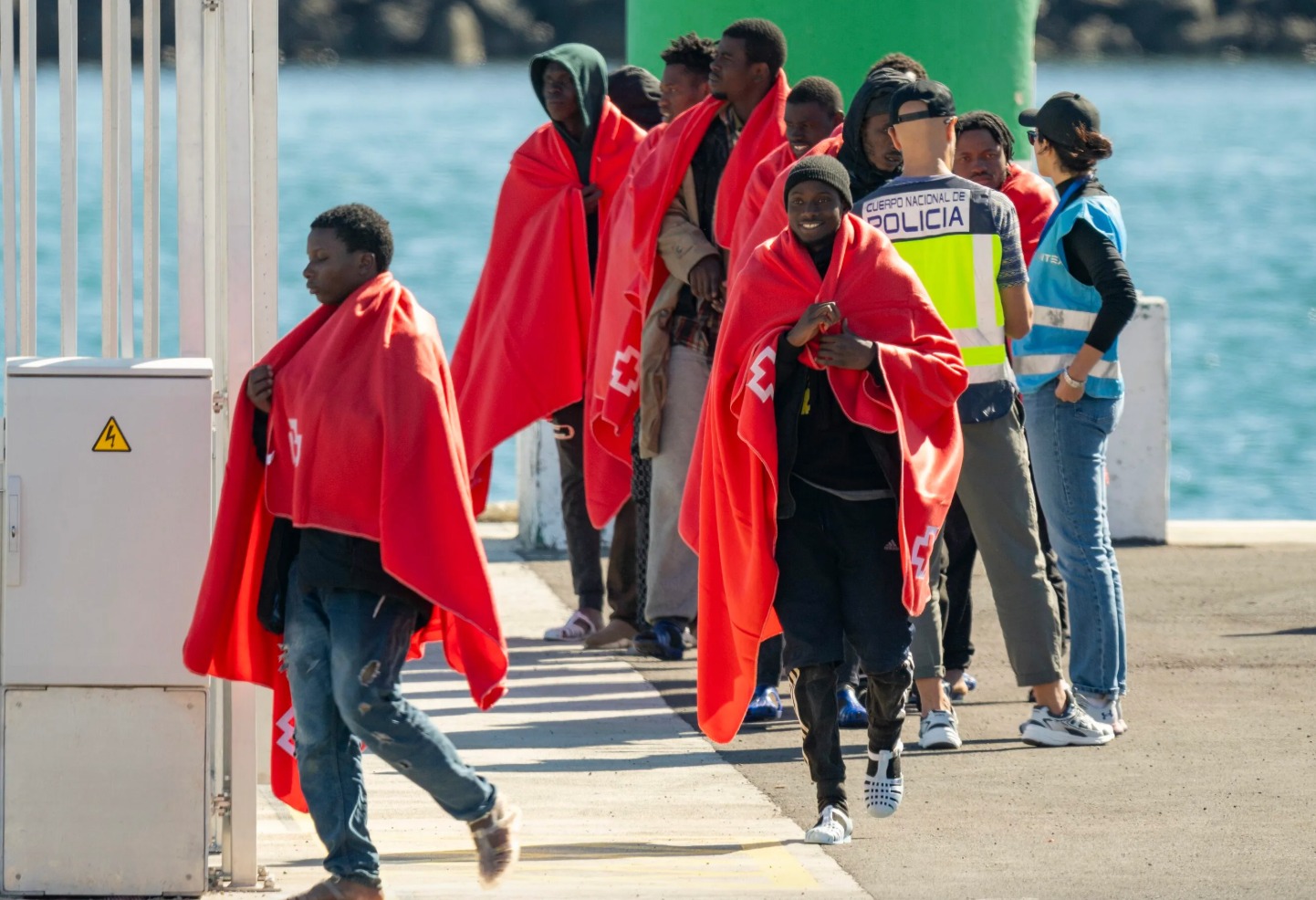
The EU’s border agency, Frontex, announced that illegal entries into the continent fell to 75,900 in the first half of 2025.
In a press release, Frontex attributed this 20% decrease primarily to stronger prevention efforts by countries of origin.
The agency, previously limited to borders between the EU and non-EU countries, has recently begun operating on borders between countries outside the EU as well.
Frontex reported a “sharp decline” in entries from the Western Balkans, the EU’s eastern border with Belarus, and West Africa.
However, illegal crossing attempts from the EU to the United Kingdom also increased by 23% to 33,200.
Frontex to increase its number of officers to 30,000
The press release stated that the Central Mediterranean route remains the EU’s busiest migration route, accounting for 39% of all irregular entries.
According to estimates by the International Organization for Migration, approximately 760 people died in the Mediterranean in the first six months of this year. In 2024, 2,300 people died in the same region.
Frontex currently has about 3,000 agents and plans to gradually increase this number to 10,000, but a recent proposal from the European Commission would raise this number to 30,000.
Meanwhile, the issue of migration continues to be at the top of the agenda for European politicians. Danish Prime Minister Mette Frederiksen has pledged to push for stricter migration rules during her country’s presidency of the EU Council.
“Our citizens expect us politicians to find new solutions, and European citizens have the right to feel safe in their own countries. That is why we need to strengthen our external borders,” Frederiksen said.
Greece tightens anti-migrant legislation
Greece’s newly appointed migration minister, Thanos Plevris, said the government plans to implement new “deterrent measures” against migrants as part of its response to the recent influx from Libya.
Plevris stated that the country’s conservative New Democracy (ND) government has adopted a policy that includes “deterrent measures” as part of a new campaign to combat migration.
The policy review process will include a re-evaluation of all state benefits provided to asylum seekers and even a review of the meals provided in migrant reception and detention centers.
In an interview with Skai TV, the minister said, “From now on, the government will pursue a policy of significantly reducing benefits. Among other things, I have asked for a review of the menu provided in the camps, which are currently like hotels.”
“Isn’t there a middle ground between having nothing and having the option of three meals a day, with meat four times and fish once? The Migration Department is not a hotel,” Plevris claimed.
Athens seeks permission to detain migrants for up to five years
Plevris also stated that the ministry is working on a new law that would criminalize staying in Greece after an asylum application is rejected. This offense would be punishable by five years in prison if the person does not agree to leave the country voluntarily.
The Greek government will also vote this evening on a legislative amendment that suspends the processing of asylum applications for those arriving in Greece from North Africa and provides for their forced return to their country of origin or transit without being registered. The suspension will initially be valid for three months.
Plevris also said the government is working on a bill that would allow migrants to be detained for up to five years.
In recent weeks, about 9,000 people have arrived on the island of Crete from Libya. This number is almost double the number of arrivals on the island for the whole of 2024. About 2,000 people arrived last weekend.
However, Council of Europe Commissioner for Human Rights Michael O’Flaherty called on Greek MPs to reject this amendment.
Mitsotakis defends decision to suspend asylum applications
Greek Prime Minister Kyriakos Mitsotakis defended the decision to suspend the processing of asylum applications for migrants from North Africa.
In an interview published in the German newspaper Bild on Friday, Mitsotakis described the decision as “difficult but absolutely necessary,” saying it was taken to send a strong message to human traffickers.
“Greece is not an open transit route. The journey is dangerous, the outcome is uncertain, and the money paid to traffickers is ultimately wasted. Illegal entry will not lead to legal residence,” the Greek leader said.
Mitsotakis added that Athens is ready to stop migration at its source by deepening cooperation with North African governments.
“Greece is not an open corridor to Europe. We are ready to work in close cooperation with the Libyan authorities to stop migration at its source,” the Prime Minister said.
Mitsotakis also requested more support from the European Union, stressing that the pressure on Greece requires a coordinated response.
“Greece is committed to pursuing a fair and effective migration policy, including legal pathways for migration, but the current situation requires urgent action. And this is not only Greece’s responsibility, but Europe’s as well,” the Greek politician said.
Europe
Von der Leyen survives no-confidence vote after making key concessions
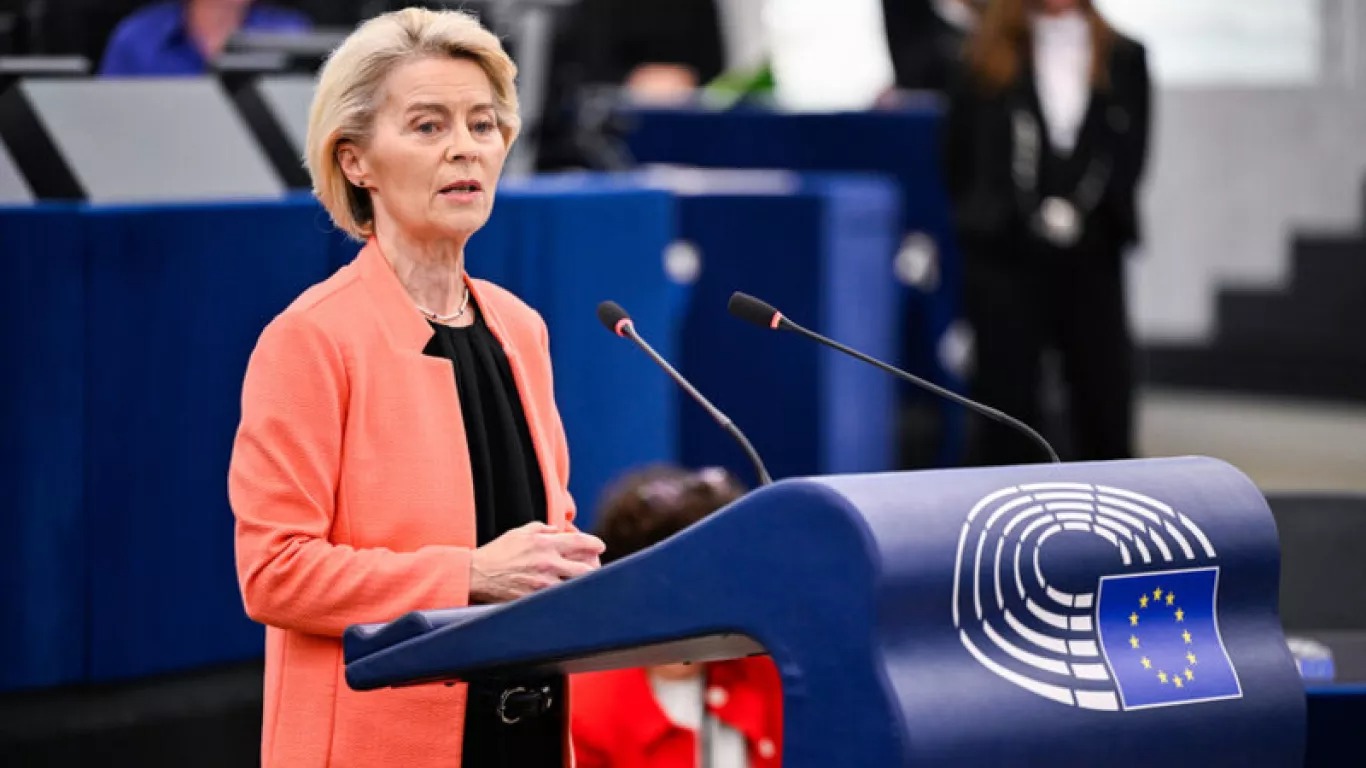
European Commission President Ursula von der Leyen has survived the first no-confidence motion against the Commission in the European Parliament (EP) after making a series of concessions.
On Thursday, a clear majority of MEPs rejected the censure motion. However, von der Leyen had to promise the Social Democrats that she would maintain the social fund as a separate fund, contrary to previous plans, and would present the anti-discrimination directive she had previously blocked to the EP.
These concessions became necessary because von der Leyen had caused significant discontent among all parliamentary groups with a questionable deal related to the procurement of Covid-19 vaccines and other measures. Observers believe that von der Leyen’s position has been weakened following the vote.
The no-confidence motion was submitted to parliament by a right-wing MEP from Romania.
Anger towards von der Leyen in Romania
The no-confidence motion against Ursula von der Leyen was triggered by intrigues during the presidential elections in Romania.
In Romania, the election results were annulled after the victory of right-wing candidate Călin Georgescu in the first round.
In the following months, Georgescu was prevented from running again in the repeat elections by the Romanian judiciary. A large part of the Romanian public believes this was done at the request of the European Commission, which had openly expressed its displeasure with Georgescu.
Von der Leyen had also announced in mid-December 2024 that she would investigate possible violations by the social media platform TikTok, whose users had run an intensive campaign for Georgescu.
Angry slogans were chanted at demonstrations in Bucharest in March, and distrust in the EU was further fueled by Western European interference in the repeat elections.
The no-confidence motion against von der Leyen was submitted by Gheorghe Piperea, an MEP from the right-wing Romanian party AUR, and was supported by George Simion, Georgescu’s defeated successor in the repeat elections.
Arrows point to von der Leyen in Covid-19 vaccine scandal
Piperea submitted his motion at a time when discontent with von der Leyen in the EP had grown significantly, extending beyond far-right groups.
One of the reasons for this is the scandal surrounding the contract the Commission President signed with Albert Bourla, the head of the US pharmaceutical company Pfizer, for the delivery of 1.8 billion doses of Covid-19 vaccines at a staggering cost of $35 billion.
The price is considered very high and the number of vaccine doses ordered excessive. The text messages in which von der Leyen agreed to the deal with Bourla are untraceable, much like text messages from her time as Germany’s defense minister.
In addition to the suspicious circumstances surrounding the vaccine deal, von der Leyen’s decision to approve the “ReArm EU” armament program, at an unprecedented cost of €800 billion, without consulting the European Parliament, has also significantly increased discontent.
Finally, she unilaterally withdrew the anti-“greenwashing” bill, against the will of many political groups in the EP.
A series of concessions from the president
The no-confidence motion was rejected by a majority of MEPs last Thursday. The main reason for this was that the motion was submitted by a right-wing MEP with whom political groups, especially the Social Democrats and the Greens, did not want to cooperate.
The motion was supported by the Patriots for Europe (PfE) group, including the French National Rally (RN), the Belgian Vlaams Belang, and the Austrian Freedom Party (FPÖ), as well as the Europe of Sovereign Nations (ESN) group, including the Alternative for Germany (AfD).
A clear majority, including the European People’s Party (EPP), the Social Democrats (S&D), and the Liberals, with 360 MEPs, voted against the motion.
However, von der Leyen had to make two concessions to secure the support of the Social Democrats in particular. The European Social Fund+ will remain an independent fund from 2028 to 2034, and the Commission will present the previously postponed anti-discrimination directive next week.
Conservative EP group divided
The European Conservatives and Reformists (ECR) faction was divided in the vote.
In addition to members of Romania’s AUR party, members of Poland’s PiS (Law and Justice) party supported the motion. Among these members was Patryk Jaki (PiS), one of the two leaders of the ECR faction.
However, Nicola Procaccini, the group leader of Italian Prime Minister Giorgia Meloni’s Brothers of Italy (FdI) party, and the FdI group opposed the motion. The FdI has been working in close cooperation with the conservative EPP and Commission President Ursula von der Leyen for some time.
The participation rate in the ECR group was extremely low at only 56%; 35 of the 79 MEPs abstained from the vote to avoid taking a side.
The disagreement within the group continues between the parties with which the EPP now systematically cooperates and those, like AUR, that are still excluded from power.
When will the era of a right-wing majority in the EP begin?
The EPP group is now going beyond cooperation with parts of the ECR group in certain areas, voting with the PfE group on some issues such as preventing migration and partially departing from the European Green Deal.
On the other hand, it is said that this only applies to draft resolutions or reports submitted to the European Parliament; the EPP group has not yet acted with the PfE on legislative decisions.
Of course, this has also succeeded in increasing the pressure, especially on the Social Democrats, to shift significantly to the right to prevent the EPP from voting with the PfE.
-
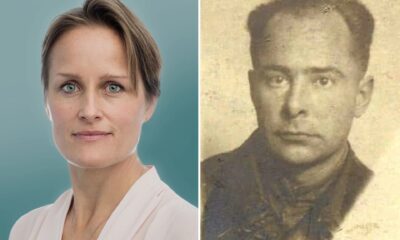
 Europe2 weeks ago
Europe2 weeks agoNew MI6 chief’s grandfather was a Nazi collaborator known as ‘The Butcher’
-
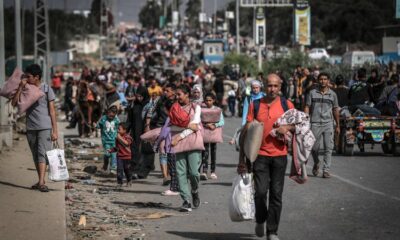
 Middle East3 days ago
Middle East3 days agoIsrael details plan for ‘humanitarian zone’ in Rafah, called a ‘concentration camp’ by critics
-
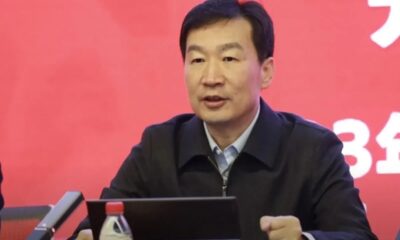
 Asia2 weeks ago
Asia2 weeks agoChinese navy chief and top nuclear scientist expelled from legislature
-
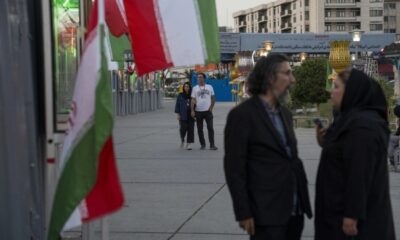
 Middle East2 weeks ago
Middle East2 weeks agoUS proposes $30 billion deal to Iran for halting uranium enrichment
-

 Diplomacy2 weeks ago
Diplomacy2 weeks agoArmenia signals potential complete withdrawal from CSTO
-
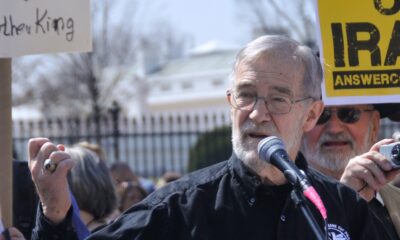
 Diplomacy5 days ago
Diplomacy5 days agoIran must reverse religious fatwa to develop nuclear weapons, says McGovern
-
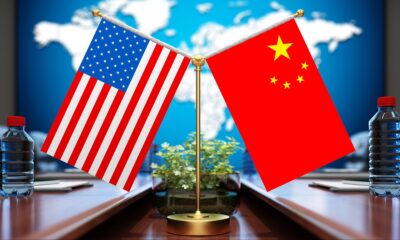
 Asia2 weeks ago
Asia2 weeks agoChina, US reach agreement on export controls
-

 Diplomacy4 days ago
Diplomacy4 days agoBlackRock halts work on Ukraine reconstruction fund amid Trump uncertainty




